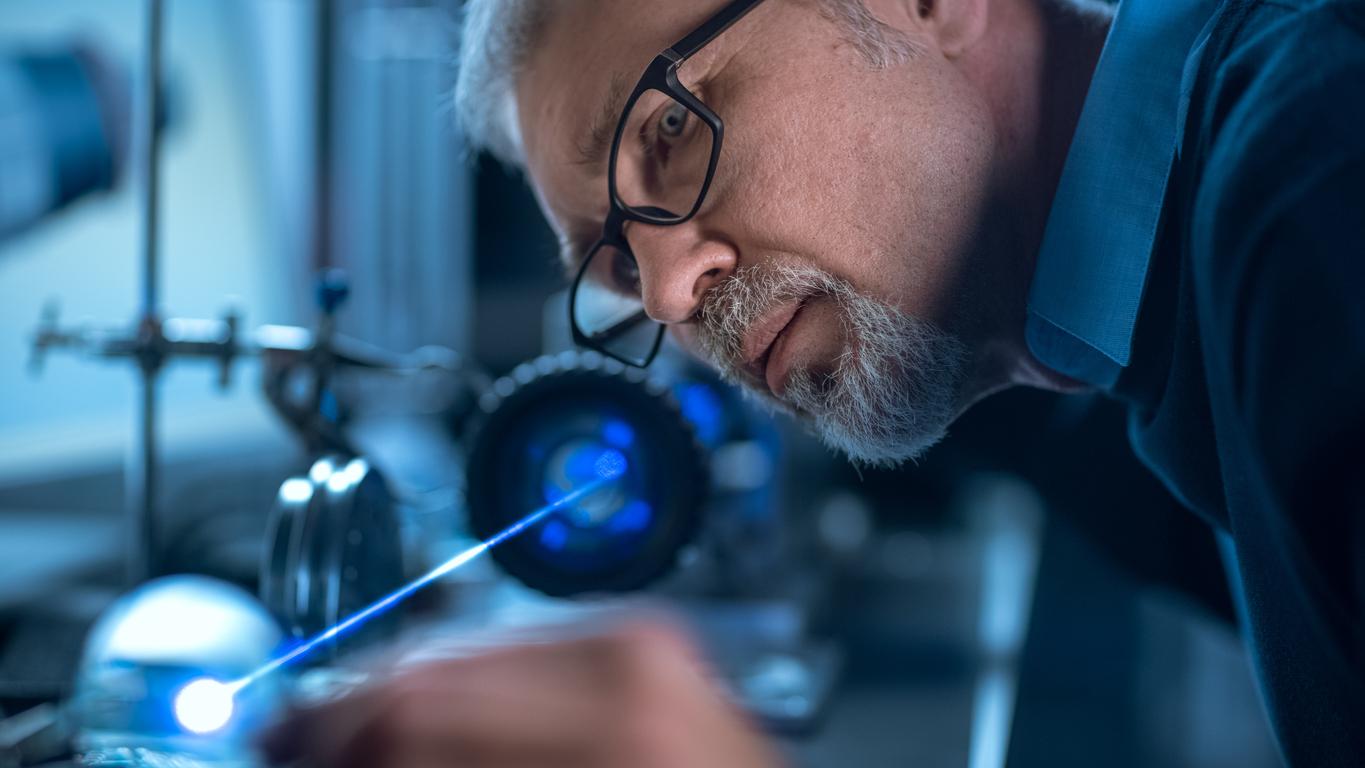American scientists have shown that optogenetics can induce muscle contraction with better control and less fatigue.

- To help amputees and paralyzed people regain control of their limbs, MIT researchers have harnessed the power of light to stimulate genetically modified muscle fibers using a technique called “optogenetics.”
- In mice, this optogenetic technique allowed muscles to be stimulated for more than an hour before becoming tired.
- Currently, the authors are working to figure out how to safely introduce light-sensitive proteins into human tissues.
For people who are paralyzed or have had amputations, neuroprosthetic devices that artificially stimulate muscle contraction with an electric current can help them regain function in their limbs. “However, these systems fail to precisely modulate muscle force and lead to rapid fatigue due to their non-physiological mechanism,” reported researchers from the Massachusetts Institute of Technology (MIT) in the United States.
Optogenetics: Stimulating Genetically Modified Muscle Fibers Using Light
So they decided to develop a new approach that could offer more precise control of muscle contraction over extended periods, as well as reduced muscle fatigue. In their work, published in the journal Science Roboticsthe team explained that instead of prescribing electricity to stimulate the muscles, they used light. In short, they harnessed the power of light to stimulate genetically modified muscle fibers using a technique called “optogenetics.” Optogenetics is a method based on genetically engineering cells to express light-sensitive proteins, which allows researchers to control the activity of these cells by exposing them to light.
To test the effectiveness of their approach, the authors conducted an experiment on mice genetically engineered to express a light-sensitive protein called channelrhodopsin-2. They implanted a small light source near the tibial nerve, which controls the muscles in the lower leg. Then, the scientists compared the amount of muscle force the rodents could generate using electrical stimulation with the forces generated by the optogenetic method.
Optogenetic technique stimulates muscles for over an hour before they tire
According to the results, the optogenetic technique caused a constant and progressive increase in muscle contraction. “As we vary the optical stimulation we deliver to the nerve, we can proportionally, almost linearly, control the strength of the muscle. This is similar to how signals from our brain control our muscles. Because of this, it becomes easier to control the muscle compared to electrical stimulation.”has explained Guillermo Herrera-Arcosauthor of the study.
The researchers also found that muscles could be stimulated for more than an hour before becoming fatigued, whereas muscles became fatigued after just 15 minutes with electrical stimulation.
At present, this approach is not feasible in humans. The authors are now working on ways to deliver light-sensitive proteins safely and effectively into human tissues. “without triggering an immune response.” They are also developing new sensors that can be used to measure muscle strength and length. If successful, the team hopes their strategy could benefit people who have suffered a stroke, limb amputation or spinal cord injury, as well as other patients whose ability to control their limbs is reduced.

















